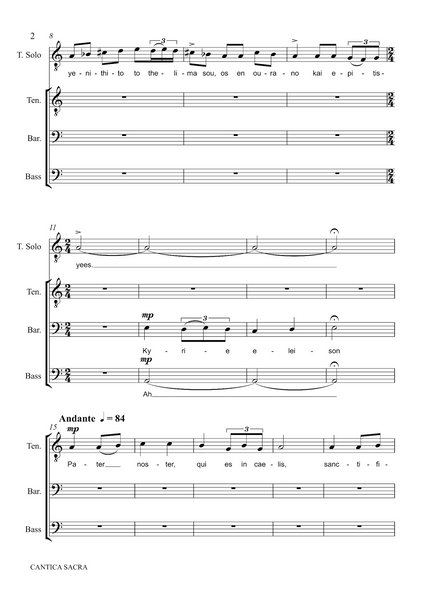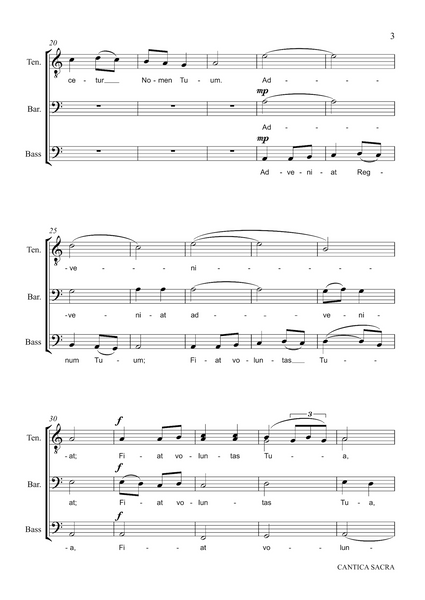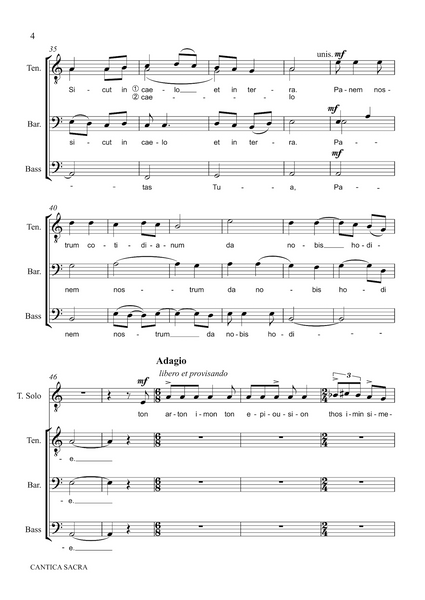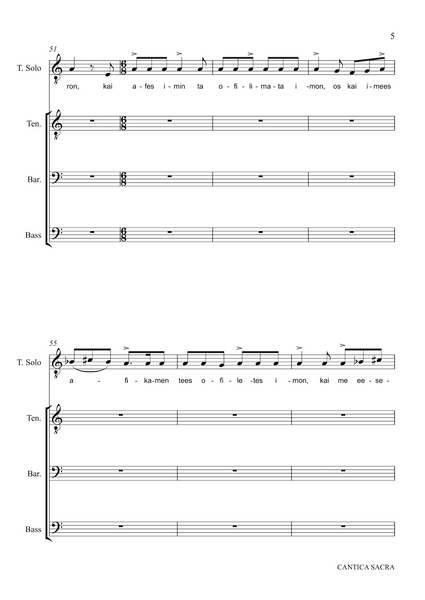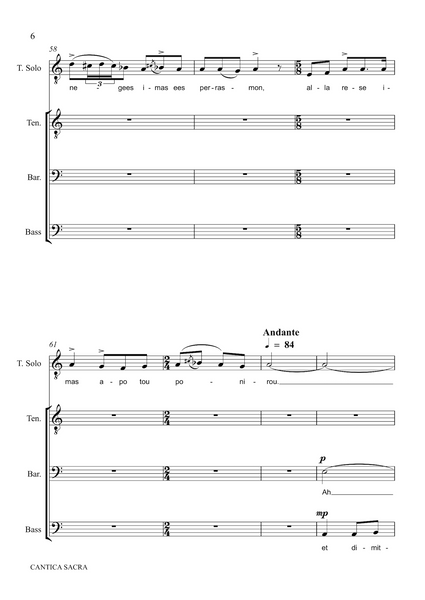Lydia Kakabadse: Cantica Sacra – for male voice choir (NXP158)
This is a sheet music edition of Cantica Sacra by the composer Lydia Kakabadse.
Sheet music for male voice choir
Score: 36 pages
Duration: 16:17 minutes
Audio sample
Preface and programme notes
Cantica Sacra (meaning sacred songs) is a cycle of six songs, unified by sacred texts in Latin and Greek. Completed in 2012, it was written in loving memory of my Greek-born mother, Elfriede Maria, who passed away the previous year and for whom the Greek Orthodox faith remained very important throughout her life.
The musical tradition of the Greek Orthodox liturgical chant was inspired by monophonic (single melodic line) vocal music, which evolved in the early Greek Christian centres. Cantica Sacra, written for unaccompanied male voices, sets out to fuse eastern (Greek Orthodox) and western (Catholic) Christian liturgies.
It incorporates Greek and Latin texts and a number of features which epitomize the Greek Orthodox liturgy – chanting, responsorial singing, open triads, parallel progressions, bass drone effects, antiphons & responses – against a more western polyphonic rich choir.
The first song, Pater Noster, alternates between the tenor solo chanting the Lord’s Prayer in Greek (for the most part in monotone style) and the choir singing The Lord’s Prayer in Latin. The chant, which features augmented seconds, embellishments, syncopated rhythms and improvised tempo, is in stark contrast with the polyphonic and melodic style of the choir, singing in strict tempo.
The faster flowing Panis Angelicus, with antiphonal singing between the tenor, baritone and bass voices, features parallel progressions in fifths and octaves, whilst De Profundis, in contrast, is rich in four- and five-part harmony with intermittent flowing runs in thirds, exuding an emotional depth and energy.
The three versicles and responses of Angelus are chanted by the tenor solo and baritone solo respectively, whilst the refrains Ave Maria gratia plena (Hail Mary full of grace) are sung by the choir. Agnus Dei, which incorporates Greek text Kyrie eleison (Lord have mercy) and Christe eleison (Christ have mercy), makes use of parallel octave progressions as well as open-fifth passages, giving rise to a stark chordal structure.
The last song, Te Deum, is a traditional hymn of rejoicing and thanksgiving. Sung andante trionfante, it alternates between rich four-part harmony and one voice line singing against a bass drone. This develops into a call-and-response litany form, where the solo tenor’s chanting alternates with the choir in a style known as responsorial singing.








